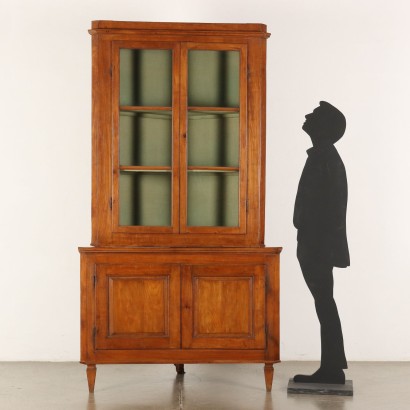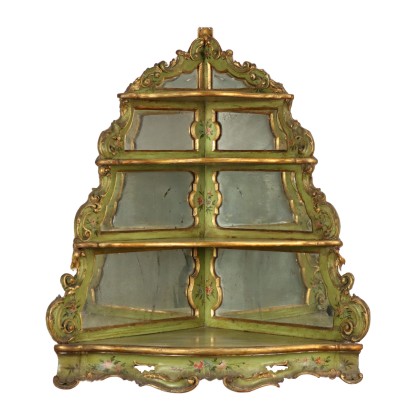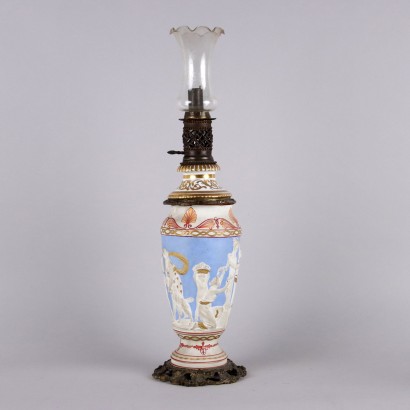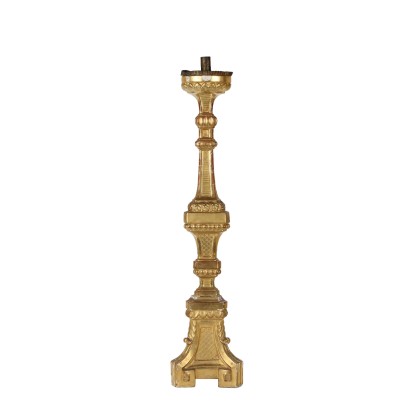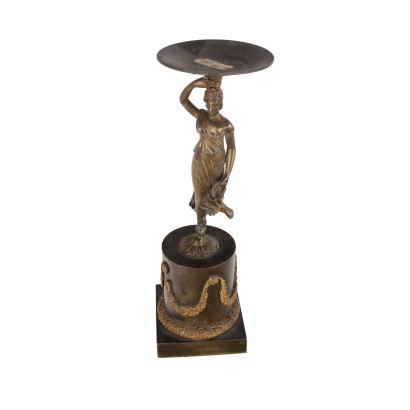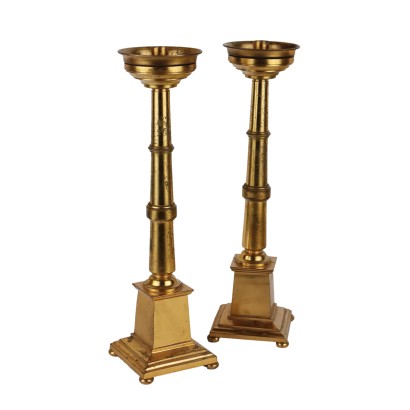Ancient Double Top Cupboard Directoire '700-'800 Cherrywood - Italy Late 18th – Early 19th Century
Features
Italy Late 18th – Early 19th Century
Style: Directoire (1790-1804)
Age: 19th Century / 1801 - 1900 , 18th Century / 1701 - 1800
Origin: Italy
Main essence: Cherry
Material: Glass
Description
Corner cabinet with double directory body in cherry, Italy, late 18th - early 19th century. Upstand with pair of glass doors replaced; body with pair of paneled doors and truncated pyramid feet.
Product Condition:
Product that due to age and wear requires restoration and re-polishing. We try to present the real state of the furniture as fully as possible with photos. If some details are not clear from the photos, what is reported in the description will prevail.
Dimensions (cm):
Height: 88
Width: 113
Depth: 64
Maximum size (cm):
Height: 227
Width: 125,5
Additional Information
Style: Directoire (1790-1804)
In this short period of time, we see, in the furniture, an accentuation of the archaeological rigor and at the same time an accentuated linear severity is formulated that in fact preludes and anticipates forms and ornamentations that will then be typical of the Empire style.The furniture of the Directoire era abandons the delicate pastel colors that characterize the Louis XVI production in favor of the dark magnificence of mahogany, which in its vast range of essences will be by far the most appreciated wood in this period.
Added to this is a general abandonment of the floral inlay trends in favor of simple fillets in ebony or amaranth-colored wood, the insertion of light linear profiles in brass is very fashionable.
The innovations are grafted onto a trend that normally finds typologies already widespread in the neoclassical era, and in some cases there is no lack of significant innovations: the chairs, often painted in light colors and archaeological motifs, are distinguished by the typical upholstered or openwork backrest that rolls up "en crosse" and in an "S".
The back legs are very fashionable if curved like a sabre and the typology with an enveloping backrest, called gondola, becomes widespread.
For studies and libraries, chair models characterized by a high concave backrest, called "en hémicycle", with a usually solid structure and a seat covered in leather, become widespread.
The use of the secrétaire finds wide diffusion and the typology of the toilette is completely new, now similar to a console on which a tilting mirror rests within hinged plates.
Certainly the most imaginative novelty of this period is the graceful psyche, consisting of a large oval or rectangular mirror, mounted within high wooden supports and generally supported by sabre-shaped legs.
This is the era in which the oval or round dining table became widely used, while the desk continued to maintain the shape of the à bureau plats models already known in the previous era.
In this period there were no particular technical-constructive innovations, the technologies remained those already in use since the beginning of the mid-eighteenth century.
Find out more about the Directory with our insights:
The unknown gaming table
INSERT ADDITIONAL LINKS:
The Austrian taste of Baroque
The furniture of the Kingdom of Naples
The end of the Directory and the beginning of the Empire
The birth of the private library
Age:
19th Century / 1801 - 1900
19th Century / 1801 - 190018th Century / 1701 - 1800
18th Century / 1701 - 1800Main essence: Cherry
Obtained from prunus cerasus , a plant of oriental origin, it is a hard wood with a light and delicate color, with a reddish vein. Due to its diffusion and availability it was used in Europe in popular furniture. In cabinet making, in the seventeenth century, it was widely used in France and England for inlay work. In Italy it was very successful in Lucca. It was also very popular in the United States for the manufacture, from the late 1600s, of commonly used furniture.The dictionary of antiques: Eclecticism
Classic Monday: a sofa from the 1800s example of eclecticism




